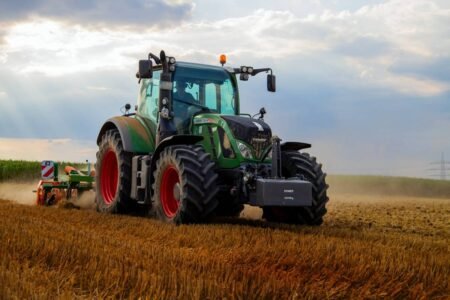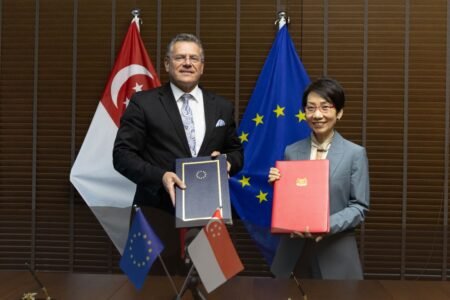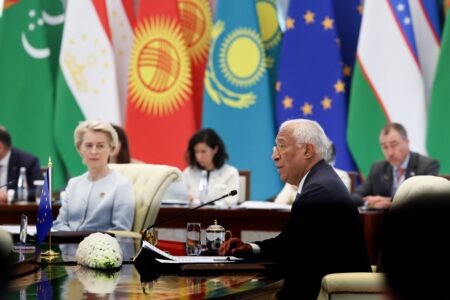The European Union and the Russian Federation have a strong trade relationship. Bilateral trade and investments continue to grow rapidly. Russia is one of the EU’s key trading partners and trade between the two economies has showed steep growth rates until mid 2008. This trend was interrupted by the economic crisis and the unilateral measures adopted by Russia which have affected our bilateral trade.
Advertisement
The EU is by far Russia’s main trading partner, accounting for 52.3% of its overall trade turnover in 2008. It is also by far the most important investor in Russia. It is estimated that up to 75% of FDI stocks in Russia come from the EU Member States. At the centre of EU-Russia relations at present are ongoing WTO accession negotiations and the negotiations of a New Agreement to replace the current Partnership and Co-operation Agreement. The Partnership for Modernization is designed to boost cooperation under the EU – Russia Common Spaces.
The New Agreement with Russia, currently under negotiations, should strengthen bilateral trade relations by enshrining some basic principles and objectives in the area of trade. The New Agreement should therefore contain substantial trade and investment related provisions.
Trade in goods
- EU good exports to Russia 2009: 65.6 billion
- EU goods imports from Russia 2009: 115 billion
Imports from Russia are mainly energy and mineral fuels products (77.3%), some manufactured goods chemicals and raw materials. EU exports to Russia are diversified, covering nearly all categories of machinery and transport equipment (42.9%), manufactured goods, food and live animals.
Trade in services
- EU services exports to Russia 2009: 18.2 billion
- EU services imports from Russia 2009: 10.8 billion
Foreign Direct Investment
- EU outward investment to Russia 2008: 25 billion
- Russian inward investment in the EU 2008: 2 billion
The Partnership and Cooperation Agreement
The Partnership and Co-operation Agreement (PCA) has been the framework of the EU-Russia relationship for more than a decade. It was signed in 1994 and entered into force on 1 December 1997. The agreement regulates the political and economic relations between the EU and Russia and is the legal basis for the EU’s bilateral trade and investment relations with Russia. One of its main objectives is the promotion of trade and investment as well as the development of harmonious economic relations between the parties. The PCA contains special provisions regarding the economic relations between the EU and Russia. EU imports from Russia are to a very large extent not subject to any restrictions. However the existing rules provide more flexibility to Russia to adopt unilateral tariff measures.
Towards a successor agreement to the current PCA
The EU and the Russian Federation are currently negotiating a new agreement to provide for the contractual framework for EU-Russia relations in the years to come, replacing the 10-year old PCA. This new legally binding agreement should provide a comprehensive framework for bilateral relations with stable, predictable and balanced rules for bilateral trade and investment relations.
The Common Economic Space (CES)
At the St Petersburg Summit in May 2003 the EU and Russia agreed to reinforce co-operation with a view to creating four EU/Russia common spaces, within the framework of the existing Partnership and Co-operation Agreement (PCA). The Common Economic Space (CES) aims at increasing opportunities for economic operators, a further step towards establishing a more open and integrated market between the EU and Russia. The overall objective of the CES is to put in place the conditions for increased and diversified trade and creating new investment opportunities by pursuing economic integration, elimination of trade barriers, regulatory convergence, market opening, trade facilitation and infrastructure development by closer co-operation, exchange of information and sharing of best practices. Working towards regulatory convergence will allow economic agents to operate subject to common rules in a number of fields throughout the enlarged EU and Russia, which represent a market of around 600 Million consumers.
The Roadmap on the Common Economic Space was adopted at the EU-Russia Summit in Moscow on 10 May 2005. The document sets out a number of principles and priority activities. It also sets up dialogues on the following trade related issues: Investment dialogue, IPR dialogue, Public Procurement Dialogue, Regulatory Dialogue on Industrial Products and Industrial and Enterprise Policy Dialogue, Energy Dialogue, Competition Dialogue, Macroeconomic and Financial Services Dialogue, Trade Facilitation and Customs.
Russia’s WTO accession
The EU is a strong supporter of Russia’s WTO membership. It is of fundamental importance for Russia’s economic reform, sustainable growth and investment climate. Moreover, once negotiations on WTO accession have been concluded, it will bring opportunities for a qualitatively new step in EU-Russia economic relations.
Russia is the only major international economy which is not yet a member of WTO. Once Russia becomes a member, it will benefit from the rights and obligations set by the multilateral trading system of the WTO, including the possibility of recourse to the intergovernmental trade dispute settlement.
On 21 May 2004, the EU and Russia concluded the bilateral market access negotiations and signed the agreement that will form part of the terms for Russia’s WTO accession. With the conclusion of a similar bilateral agreement with the United States on 19 November 2006, Russia has finalised a substantial part of its bilateral market access negotiations. The next step is the conclusion of the multilateral part of the WTO accession negotiations through the adoption of the so-called “working party report”. From an EU perspective, main specific issues to be solved are export duties, including on wood, pricing policy in relation to railways and certain issues of agricultural imports to Russia.
From a broader systemic view, Russia also has to implement a number of legislative changes to bring its regulatory system in line with WTO rules. In this regard, a number of new developments that concern the trade regime have taken place with the introduction of the Customs Union between Russia, Kazakhstan and Belarus as from 1 January 2010, and these changes are now being analysed.
It is the Russian Government’s aim to complete its WTO- accession negotiations by the end of 2010. The EU strongly supports this timetable. Technically this aim could be achieved if there is timely input and a constructive approach, first of all, from Russia but also from the other parties involved. A lot of work still rests with Russia but the EU is ready to continue working closely together to this end.
Source: European Commission







